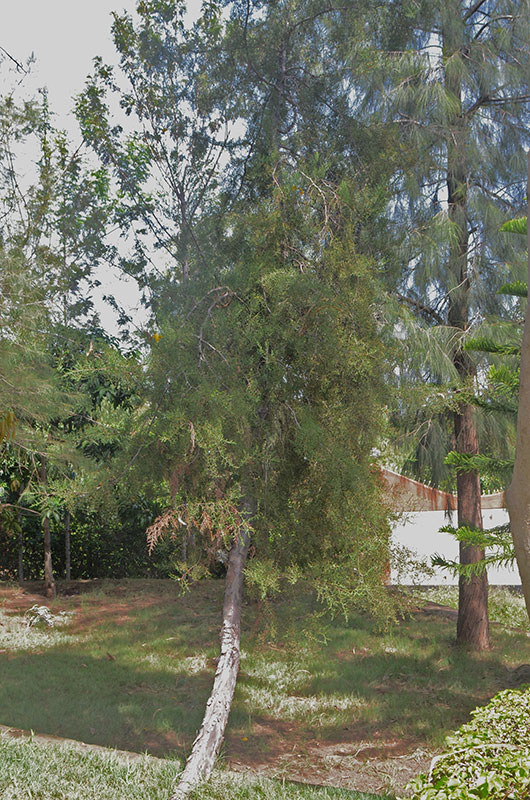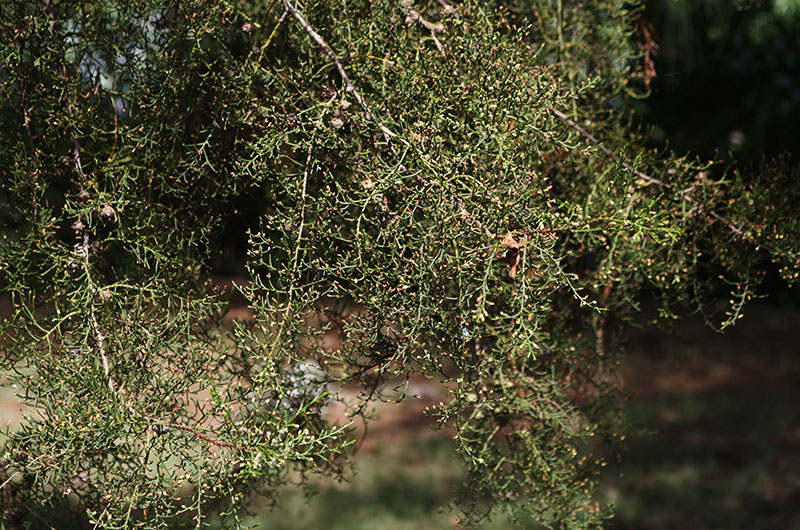| General Description | Large broadly pyramidal tree with cylindrical branches which have branchlets that are pendulous in appearance covered in dense foliage. |
| ID Characteristic | Deeply furrowed exfoliating bark that has a cracked appearance. Foliage is bluish-green to dark green, the leaves are small ovate and pressed tightly together, appearing scale-like. The small seed cones are spherical with 6-8 tiny scales which change from bluish-green to brown at maturity. |
| Shape | Crown is dense and broad to pyramidal, more pyramidal in younger trees; with a short trunk. |
| Landscape | Ornamental in large landscapes such as parks. |
| Propagation | Allow seed capsules to mature on the plant, collecting just prior to dehiscence. Harvested seeds should be stratified for 3 weeks to encourage germination. When seedlings reach a manageable size they can be put into pots to continue growing for their first winter. Then should be planted outside late spring to early summer after the last frost. Cuttings should be taken late spring / early summer, grown in a frame to provide the humidity needed for rooting. |
| Cultivation | Prefers full sun, deep moist, well-drained soils with a pH of 6.6-7.5. Cannot tolerate water logging and is drought tolerant. |
| Pests | Honey fungus can harm young plants. Oemida gahani borer. |
| Notable Specimens | Hanbury Botanic Gardens, Mortola, Italy.
Kilmacurragh Arboretum, Rathdrum, Ireland.
Woodstock Gardens, Inistioge, Ireland. |
| Habitat | Mountainous regions. |
| Bark/Stem Description | In young trees the bark is smooth and orangey brown, becoming reddish brown as it matures. The mature bark has vertical fissures and eventually becomes rough and develops short cracks. The bark exfoliates and peels off in long strips. |
| Flower/Leaf Bud Description | Small greenish yellow buds. |
| Leaf Description | Leaves are bluish-green oval shaped, closely pressed and scale-like. The leaves grow in a dense spray type of formation. |
| Flower Description | Male cones are small yellowish green plump tips on branchlets, these cones produce yellow pollen.
Female cones are spherical becoming 1-1.5 cm in diameter turning from greenish blue to brown as they mature.
|
| Fruit Description | Seed cones are sub-globose, 1-1.5 cm in diameter with 6-8 scales each having several ovules. The seeds are brown in colour and have resin glands that are approximately 4 mm long, there are approximately 75 seeds in each cone. |
| Colour Description | Leaves bluish-green to dark green with some yellowy green near newer shoots. Bark can range from a reddish-brown to a greyish-brown. Young trees have bark that appears as an orangey-brown. Stems between foliage are reddish-brown. New female cones are bluish-green and change to brown at maturity. Male cones are bluish-green and have a slightly yellow appearance. Seeds are brown. |
| Texture Description | It is a medium textured tree and remains medium textured year round. |

